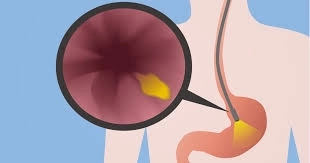
Upper GI Endoscopy Accurate NonSurgical Diagnosis with Dr. Salah El-Din El-Sakhawy
Published on: 2025-06-18 | Written by: Dr. Salah El-Din El-Sakhawy, Consultant of Bariatric and Laparoscopic Surgeries
Upper GI endoscopy is one of the most important non-surgical diagnostic procedures, used to investigate causes such as acid reflux, ulcers, or internal bleeding. Dr. Salah El-Din El-Sakhawy, Consultant in Bariatric Surgery and Endoscopy, explains that this tool enables precise diagnosis and the development of tailored treatment plans.
What is an Upper GI Endoscopy?
Dr. Salah El-Din El-Sakhawy explains that an upper GI endoscopy involves inserting a thin, flexible tube with a small camera through the mouth to examine the esophagus, stomach, and duodenum. It allows direct visualization of tissues and collection of biopsy samples when needed.
When Do You Need an Endoscopy?
| Condition | Reason for Endoscopy |
|---|---|
| Chronic acid reflux | To diagnose esophageal irritation |
| Stomach or duodenal ulcers | To assess depth and location |
| Difficulty swallowing | To check for blockages or inflammation |
| Upper GI bleeding | To locate and potentially treat the source |
| Suspected tumors or chronic issues | To obtain biopsies for lab analysis |
Endoscopy vs. Other Examinations
| Type | Accuracy | Biopsy Capability | Direct Visualization |
|---|---|---|---|
| X-ray | Moderate | No | No |
| Lab tests | Good | No | No |
| Endoscopy | High | Yes | Yes |
Preparing for the Procedure
Dr. Salah El-Din El-Sakhawy explains that preparation includes:
-
Fasting for 6–8 hours prior to the procedure.
-
Pausing certain medications as advised by the doctor.
-
Administering local anesthesia or mild sedation to reduce discomfort.
Is Endoscopy Painful?
According to Dr. Salah El-Din El-Sakhawy, the procedure is painless and typically lasts 10 to 15 minutes. Patients may feel mild throat discomfort but do not require general anesthesia or surgery and can return home the same day.
When to See a Doctor?
Consult your doctor immediately if you experience:
-
Persistent acid reflux unresponsive to medication.
-
Recurring pain in the upper abdomen.
-
Difficulty swallowing or a lump sensation in the throat.
-
Vomiting or passing blood.

